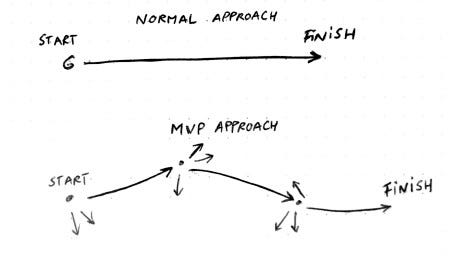4 Reasons why you need an MVP
If you’re into sports, you probably know that MVP stands for Most Valuable Player. But in the last couple of years, in the context of business and specifically product development, MVP stands for Minimum Viable Product. What does that mean?
A quick look at Wikipedia and the meaning is clear: a product with just enough features to satisfy early customers. The concept was made popular by Eric Ries in his 2011 best seller book: The Lean Startup.
You might be wondering: “but what forms can an MVP take?” The answer is many. One might consider a simple landing page or product explainer video for your product/idea to be an MVP. Another common shape MVPs take are prototypes, for example, when starting a crowdfunding campaign, a simple prototype can increase your funding possibilities exponentially. An MVP can be said to be a form, part, or representation of your product that allows you to test it.
The strategy of developing an MVP has become standard these days amongst start-ups. It can be summed up by putting something that is only “good enough” in the market.
After spending so many hours planning out your great app idea, you’re probably wondering: Why on earth would I develop something that is only “good enough”?
Here’s why “good enough” is probably exactly what you need:
1. It’s Cheaper.
Let’s face it, you are probably in no position to be a big spender. Unless you have millions in funding, you may be worried about finances right about now. By making something good enough with limited features or by “cutting down the fat”, you won’t end up with something that looks like your grand idea or that you imagined. On the bright side, however, you reduce the cost spent and risk if the product doesn’t perform as well as you may have thought.
As Reid Hoffman (founder of LinkedIn) said: “If you are not embarrassed by the first version of your product, you’ve launched too late.”
2. It’s Faster.
By focusing only on the essentials, you will save time, which today, in a saturated technology market, can be very precious. Because markets are constantly changing, time to market can be a critically short window for start-ups. You need to get out there and get out there sooner than later. For investors, proving that you can go to market quickly means that they will get their money back faster.
3. It Gets People Talking.
Once you have an MVP, you have what can be called a “proof of concept”. Having something in your hands that you can show, even if it’s just a prototype, can get people talking about it. Remember, most people need to see it to believe it (or invest in it). Being able to go to market quicker and taking something tangible to an investor can mean one critical element for your product: get that funding (yeah, unfortunately, passion is not enough.) An idea excites people of course, but a product (even a limited one) excites people even more and creates more hype for your product. Turn an empty proposition into a valuable one. Believers will become buyers.
4. It’s Good Strategy.
Developing an MVP allows you to incrementally develop your product in a step-by-step approach. Furthermore, having something essential not only means that you have more flexibility to add features to it but also that you can remove features or revert to a previous version without any added costs.
In case that was confusing (sorry) here is a sketch:
Bottom Line.
Whether you are planning on developing a product or you are trying to bring your first product iteration to market, the MVP strategy is something very valuable to consider. It allows you to focus on what matters, test your concept, create a working prototype to help get funding, move to market quicker and ultimately, prove that your product is capable of working successfully.
However, there are two important factors you should keep in mind when adopting this strategy:
Firstly, an MVP is a means and not an end. It’s a way of getting started and to increment your product, but you should always bear in mind the end goal — that big vision. The MVP is the base, your grand idea is the goal, between them, a timeline with adding, removing, or simply experimenting with features.
Secondly, when cutting down to essentials, be mindful of which features you omit. It is important that you don’t reduce your value proposition in any way. The value proposition is the core advantage of your product/startup and you don’t want to lose it.
“The lesson of the MVP is that any additional work beyond what was required to start learning is waste, no matter how important it might have seemed at the time.” ― Eric Ries
At Bliss, we work with entrepreneurs who have million dollar product ideas to develop but don’t have a million dollars. We not only know how to identify your MVP elements but also walk you down the long road of product development and incrementation. Contact Us.
(We also make kick ass apps.)
This post was originally posted in the Bliss Applications Blog where I’m interning during the summer of 2017.
